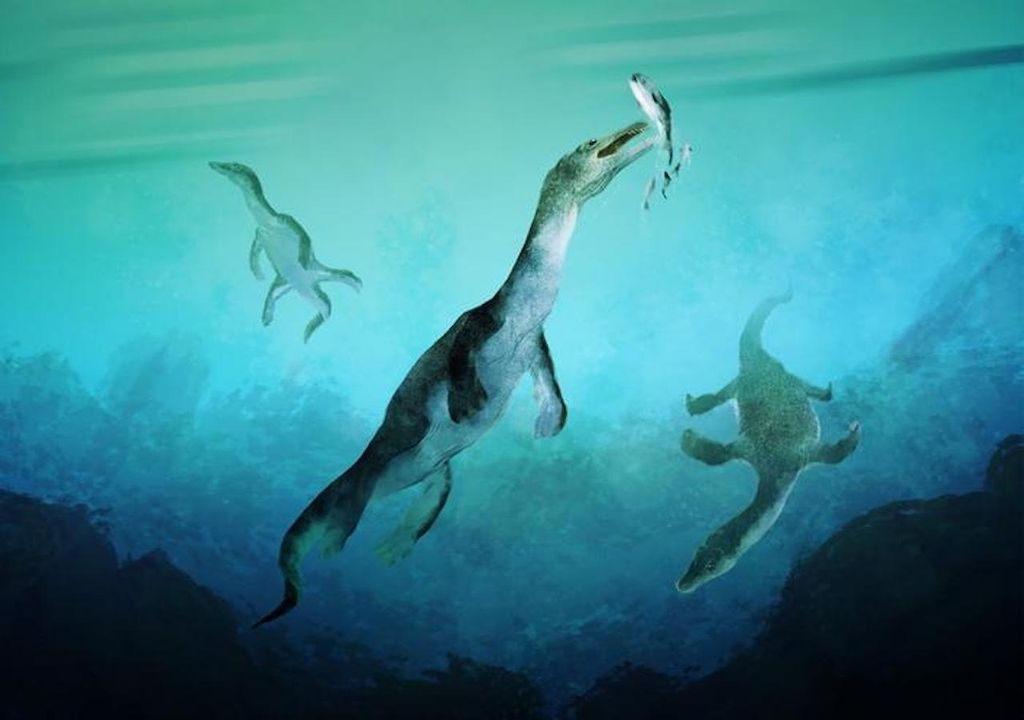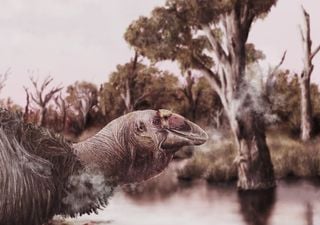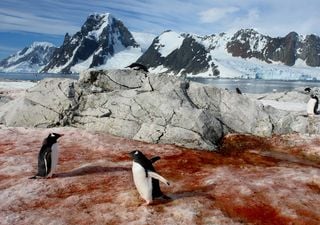New Zealand Polar Nothosaur fossil is the oldest ever found in the Southern Hemisphere
An international research team has identified the oldest fossil of a sea reptile from the Southern Hemisphere, a Nothosaur vertebra from South Island, New Zealand.

Reptiles first invaded the seas after a devastating mass extinction event that devastated marine life and helped to pave the way for the age of the dinosaurs almost 252 million years ago. Evidence of this event has only been discovered in a few locations worldwide: northwestern North America, southwestern China, and the Arctic island of Spitsbergen.
Although this specimen is a single isolated vertebra excavated from a boulder within the stream bed at the bottom of Mount Harper, this discovery has helped shed light on the unknown record of early sea reptiles from the Southern Hemisphere.
When Reptiles Ruled
Reptiles ruled the seas for millions of years before the dinosaurs ruled the land. The most diverse and geographically longest surviving group was the sauropterygians, which had an incredible evolutionary history of over 180 million years. Nothosaurs could grow up to 7 meters long and swam using four limbs that acted like paddles. They also had flattened skulls with slim conical teeth that were used to catch fish and squid in their watery homes.
The New Zealand Nothosaur was found during a geological survey in 1978, its importance was not recognised until international researchers joined together to analyse the vertebra and other associated fossils.
Dr Benjamin Kear from The Museum of Evolution at Uppsala University, lead author on the study said, “The Nothosaur found in New Zealand is over 40 million years older than the previously oldest known sauropterygian fossils from the Southern Hemisphere. We show that these ancient sea reptiles lived in a shallow coastal environment teeming with marine creatures within what was then the southern polar circle.”
The oldest Nothosaur fossils are around 248 million years old and have been discovered along an ancient, northern low-latitude belt, that would have stretched from the northeastern to the northwestern margins of the Panthalassa super-ocean. The origin, timing, and distribution of when Nothosaurs reached these locations are still debated within the community. Some theories say that they could have migrated along the northern polar coastlines, used currents to cross the super-ocean, or used inland seaways.
Nothosaurs thrived at the South Pole
“The beginning of the Age of Dinosaurs was characterised by extreme global warming, which allowed these marine reptiles to thrive at the South Pole. This also suggests that the ancient polar regions were a likely route for their earliest global migrations, much like the epic trans-oceanic journeys undertaken by whales today. Undoubtedly, there are more fossil remains of long-extinct sea monsters waiting to be discovered in New Zealand and elsewhere in the Southern Hemisphere,” says Dr Kear.
Source information:
The fossil is currently being held in the National Palaeontological Collection at GNS Science in New Zealand. Study link: https://linkinghub.elsevier.com/retrieve/pii/S0960982224003750








